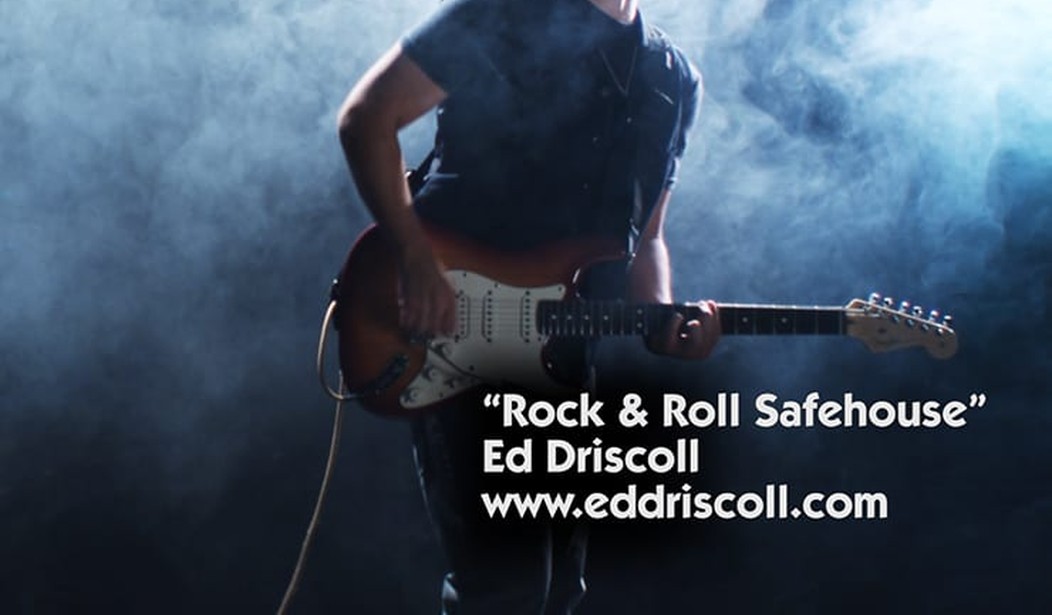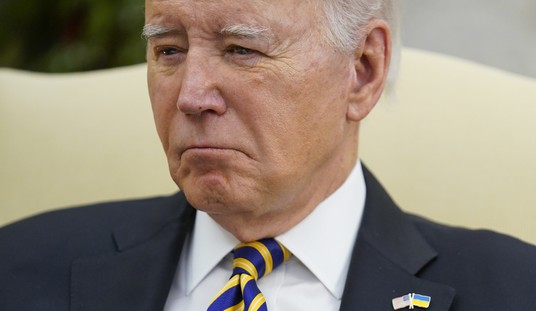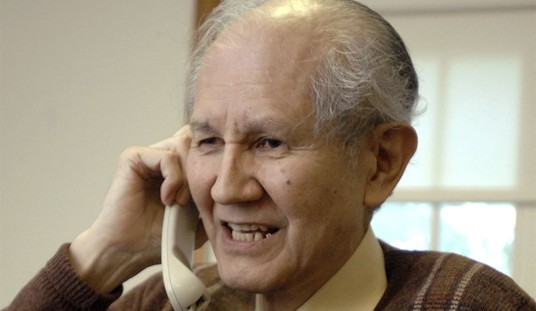We’ll look at how the above song, “Rock & Roll Safehouse,” was recorded next week. But first, how to make an early MTV-style video without leaving your editing room. First, some background on the song, which I wrote last year. It was inspired by an interview with Elvis Costello in the 2016 book Anatomy of a Song: The Oral History of 45 Iconic Hits That Changed Rock, R&B and Pop, written by the Wall Street Journal’s Marc Myers, in which Costello said:
Soon after I completed [1977’s “(The Angels Wanna Wear My) Red Shoes,”] I was signed to Stiff Records, a British independent label. Stiff sent me off to Headley Grange, about an hour and a half southwest of London, to rehearse backed by members of Clover, an American country-rock band that was in the U.K. to record an album. Headley Grange was a former poorhouse that became a rock ’n’ roll safe house where record companies lodged their bands and had them work on material before recording. It was cost-effective for them.
The “rock ’n’ roll safe house” phrase was great; it also conjured up images of TV series like Miami Vice, where the cops are always hiding people out in an undercover “safehouse” before a case goes to trial. Headley Grange was where Led Zeppelin wrote or recorded much of their best material, including both “Stairway to Heaven” and “Kashmir,” and where Genesis wrote their breakthrough Lamb Lies Down on Broadway album. The phrase also evoked Nellcôte, the French villa where the Rolling Stones, as tax exiles, recorded much of their epochal 1972 double album, Exile on Main Street. Both locations conjured up mental images of rock bands under pressure (or at least enough pressure to add some drama to the song), surrounded by their roadies, hangers-on, and other louche people on the make.
The song was also a way to commemorate the project studio it would be recorded in, built after our 2016 escape from California, and the subject of its own two-part article at the Lifestyle section last year.
After completing the song, I knew two things: I definitely wanted to make a rock video to accompany it, and I definitely did not to want to appear in that video. After years of stiffly appearing in my Silicon Graffiti commentary videos for Ed Driscoll.com, and after looking at the painful footage last year of Joe Scarborough looking like a middle-aged dork in a business suit strumming a Fender Jaguar guitar in his pundit-turned would be rock star video, I did not want to go the same campy route.
Breaking into the Video Vault
Fortunately, there was an affordable alternative available to me. During the period of 2008 through 2012 or so, back when I was doing my Sillicon Graffiti videos, I accumulated a fair amount of stock footage from Digital Juice for B-roll material. Since most of it was going to be projected behind me on the monitor of a newsroom virtual set, I didn’t really care if it was standard definition or high definition. I just wanted something to provide visual interest while I droned on in a suit. My stash of Digital Juice stock footage had loads of stuff, ranging from rock bands jamming, to party people partying, to slow-motion footage of bottles being dropped and broken. None of which found a home on Silicon Graffiti. All of which was perfect (or at least much better than nothing) to illustrate a song about rather louche types recording a song in an imaginary mansion.
This material was all on DVD-ROM that was imported into Digital Juice’s proprietary “Juicer” software and rendered as high-definition QuickTime files. The standard definition footage, which was in the traditional 4X3 television aspect ratio, was upconverted to HD. I carefully recomposited each shot to center the action and/or ensure that the actors’ heads weren’t cropped. Some of the SD footage translated quite well; on others, such as the close-up of the drum rolls, obvious pixilation is evident, but at least there’s footage to insert.
Because I was worried about how the SD footage would look, I used one of Digital Juice’s animated backings, which has an old scratched up black and white movie look, as if staring into an old Moviola editing machine, as a framing device. That set was also the source of the old-style 3,2,1 movie countdown. In the 1980s, MTV videos often began with the shot of a slate announcing the song’s title and the artist’s name, and these were invariably accompanied by a distinctive beep sound. I again rummaged through my sound effects, found something in the ballpark, and pitched the tone up using Melodyne’s pitch correction software to get it closer.
Cutting to Match the Sound Effects
With the exception of the opening beeps, all of the sound effects at the beginning of “Safehouse,” and the door slam at the end, were first laid in when I recorded the song, and I cut the videos to match their timing. I had envisioned a Ferrari or some sort of macho Euro-supercar when I created “Safehouse’s” opening sound effect last year. But all Digital Juice had were shots of a 1994-2004 era Ford Mustang, so that’s what I used.
The only footage I didn’t have was the exterior of the castle/mansion building, a close-up of a man walking to match-up to the sound effects I had laid in a year ago, and the shot of the Marshall amps, which were namechecked in the song. For the footsteps, I simply placed my Panasonic Lumix digital camera on a tripod, placed the camera into video mode, put on a pair of shoes that best matched the pair worn by the actor who jumps out of his Mustang, and recorded myself walking.
While I did have a shot of man knocking on a door, the door was opened by a rather schlubby looking fellow, ruining the shot’s mystery. So I created a black matte in Photoshop, basically a black rectangle with the edges blurred, and animated its movement in Photoshop, to align with the door being opened. As with all of the opening sequence, the door knock shot was aligned to match the sound effects under it.
Constructing a Safehouse
For the shot of the building, I found a high-resolution photo, loaded it into Photoshop, and cut out the sky background. I knew I had high resolution footage of clouds passing in my Digital Juice stock footage stash, so I wanted to employ a trick used by Hollywood matte painters dating back to at least the 1930s, if not earlier: adding moving clouds to add motion to an otherwise still photo or painted background. In the old days of Hollywood, that sometimes meant physically editing a photo with an X-Acto Knife. (In the 1982 film Blade Runner, in order to create the shot of one of the film’s ubiquitous advertising blimps passing over a ceiling window in Los Angeles’ historic Bradbury Building, a still photo of the ceiling was used, and an artist had to physically cut between each window pane. I don’t envy that kind of no-room-for-error work.) Fortunately, Photoshop has what is called an “Alpha Channel.” Cutting an image’s background and deleting it exposes the Alpha Channel, under which new material can be composited. And since they’re both Adobe products, Photoshop integrates very seamlessly with Premiere Pro, the video editor I’ve been using since 2008.
Once I had my moving clouds matted behind the building, I looked to see what else I could do with the image. In my Digital HD footage material, there were great time-lapse shots of the nighttime sky. In order to make the building look like it was photographed at night, I relied upon a digital version of another old Hollywood technique, and put a blue filter on the image, setting it so that it would only impact the top layer, and not the background. Blue filters were how movies and TV created “day for night” shots for decades. In the 1960s, Hogan’s Heroes and Mission Impossible in particular seemed to have many daring nighttime raids that once you know what to look for, were obviously filmed at high noon, except a blue filter was placed over the camera lens. It’s loads of fun take Hollywood techniques that existed for well over half a century, and employ them inside a computer.
The Marshall amps were simply a Photoshop of the amps against a stock brick wall photo. I placed it behind the Digital Juice Moviola frame so that I could animate it, to provide at least a little sense of motion. In retrospect, I wish I had composited some animated smoke elements between them, to add more visual interest and to better match the close-ups of the guitarists and drummer that follow.
(Speaking of which, for the musical trainspotters out there, yes, I know the guitarist’s fingering doesn’t match up to what I’m playing at all. And that he’s playing a Stratocaster and I played a Telecaster. But the footage is beautifully lit, staged, and videotaped in HD, and he looks much better and younger than I do.)
Once I had acquired all my elements, I began to stitch everything together in Premiere Pro. I placed the mixed-down audio file of “Safehouse” into an audio track, and set to work. building all of the footage on top of it. Much of the stock footage I had was sped up or on occasion slowed down to match the timing of the music. A handful of shots, such as the close-up of the dashboard going from park to drive and the phone being put down, were actually reversed from their original direction. Shots such as couples toasting or the pool game break shot were aligned so that their apex – the clinking of the glasses or beer bottles, and the break of the balls — occurred on song beats. Almost all of the shots were cut to the beat of the music, in classic MTV-style editing. I deliberately timed the tracking shot of the partiers blocked by a long span of white wall to match up with the Monty Python-inspired line about trying “not to be seen.” And I completely lucked out with the shot of the girl singer appearing to shout “Safehouse!” – that’s just pure synchronicity and a happy accident.
While most of the shots were hard cut to increase the freneticism, when the song’s “drop chorus” occurs before the mile-long fadeout, I deliberately cross-faded the shots to suggest a more languid pace. I held back the great HD shot of the Jack Daniels bottle breaking in slow motion to cap this sequence with enough of a visual impact to take the song into its final choruses.
The Heat of the Video Wall
In order to both recycle the footage I had, and to suggest a huge wall of singers on the final choruses, I hit upon the idea of a video wall, a widescreen version of the video wall employed by the early MTV-era supergroup Asia for their hit single “Heat of the Moment.” Each of the stock footage shots I had, plus a few I didn’t have room for earlier (such as the close-up of the Mustang burning rubber), were shrunken, aligned, and timed to appear in sequence. It took a few tries to get the rhythm of their starting times to work.
For the final chorus, I introduced even more images to match the bigger wall of voices. However, I had so many shots going simultaneously, they choked my computer’s RAM and the sequence wouldn’t render! I ended up turning off all of the images except for a single row’s worth, exporting each row separately as a single QuickTime file, and then flying each row back in. Then the computer was only compositing six shots instead of 24, and all was well.
The last element I created for the video was the MTV-style opening and closing graphic listing the song and its performer. A quick bit of Googling turned up the MTV font, which was a 1920s Bauhaus-era font called Kabel, with a drop shadow. Fortunately, it’s available for free on the Internet, so I created a title card in Premiere, and later exported it to Photoshop, along with an HD shot of the guitarist rocking out to create the video’s YouTube still shot. I had thought about using the exterior of the building, but I thought the dynamic shot of the guitarist promised much more excitement than a still photo of a building.
Unlike recording the song, this “no-shoot” video only took a few hours of work each day for about four days to create using Premiere Pro and Photoshop. Digital Juice now has a huge, affordable collection of downloadable stock footage, and there are numerous other providers, so look for more videos from your humble narrator in the future.
Next week: How the underlying song was written and recorded.









Join the conversation as a VIP Member